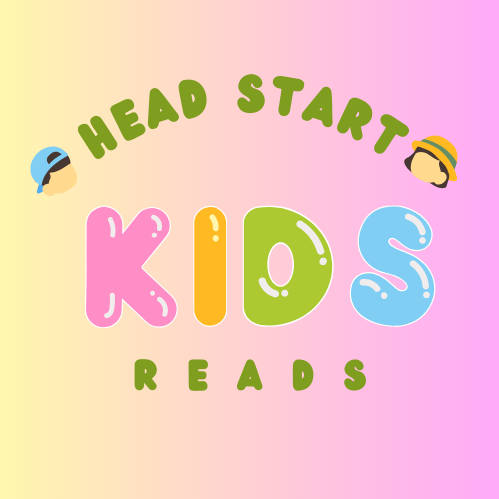Keeping Reading Lessons Engaging: Strategies to Prevent Boredom in Children
Introduction:
As parents and educators, we recognize the importance of cultivating a love for reading in children. However, keeping young learners engaged during reading lessons can sometimes be a challenge. The key lies in adopting creative strategies that capture their attention and ignite their enthusiasm for the written word. In this guide, we explore effective methods to prevent boredom during reading lessons, drawing inspiration from innovative programs like Reading Head Start, championed by Sarah Shepard, which prioritize interactive and engaging learning experiences.
I. Understanding the Factors Contributing to Boredom

- Monotony in Learning Materials: One of the primary reasons children may become bored during reading lessons is the repetitive nature of learning materials. When presented with the same texts or activities repeatedly, learners may lose interest and disengage from the lesson.
- Lack of Relevance to Their Interests: Reading materials that fail to resonate with a child’s interests can also lead to boredom. Children are more likely to engage with lessons that align with their passions and preferences, whether it’s adventure stories, science fiction, or tales of fantasy.
- Passive Learning Approaches: Passive learning approaches, such as traditional lecture-style lessons or rote memorization, can contribute to boredom in children. Learners thrive in environments where they are actively involved in the learning process, rather than being passive recipients of information.
II. Strategies to Keep Reading Lessons Engaging

- Diversify Reading Materials: To prevent boredom, it’s essential to diversify reading materials and incorporate a variety of genres, formats, and topics. Offer children a range of books, magazines, graphic novels, and online resources to cater to different interests and learning styles.
- Make Learning Interactive: Engage children in interactive learning activities that stimulate their curiosity and creativity. Encourage discussions, role-playing, storytelling, and hands-on projects related to the reading material. Interactive activities promote active participation and deeper understanding.
- Utilize Technology: Harness the power of technology to enhance reading lessons and capture children’s interest. Explore interactive e-books, educational apps, audiobooks, and online reading platforms that offer engaging features such as animations, games, and quizzes.
- Incorporate Multi-Sensory Techniques: Appeal to multiple senses by incorporating multi-sensory techniques into reading lessons. Use props, visual aids, music, and movement to make learning more dynamic and memorable. Multi-sensory experiences create a rich learning environment that appeals to different learning modalities.
- Connect Reading to Real-World Experiences: Make reading lessons relevant to children’s lives by connecting the material to real-world experiences and interests. Explore topics that relate to their hobbies, experiences, or aspirations, allowing them to see the practical applications of reading skills.
- Provide Choice and Autonomy: Empower children by giving them choice and autonomy in their reading selections. Allow them to choose books based on their interests, and encourage independent exploration of topics that intrigue them. Choice fosters a sense of ownership and motivation in learning.

Read Also
10 Ways to Raise a Child Who Loves to Read
III. Implementing Strategies in Reading Head Start
- Diverse and Engaging Curriculum: Reading Head Start, spearheaded by Sarah Shepard, offers a diverse and engaging curriculum that keeps children excited about reading. The program incorporates a wide range of reading materials, interactive activities, and multimedia resources to cater to different interests and learning preferences.
- Interactive Learning Techniques: Drawing from best practices in early childhood education, Reading Head Start utilizes interactive learning techniques to actively engage children in the learning process. Through games, songs, storytelling, and hands-on activities, children develop essential reading skills while having fun.
- Personalized Learning Experience: Reading Head Start recognizes the importance of personalized learning experiences for children. The program allows for flexibility in pacing and adapts to each child’s unique learning needs and interests, ensuring that lessons remain engaging and relevant.
Read Also
Reading Head Start Review | Comprehensive Review
IV. Tips for Parents and Educators
- Create a Positive Learning Environment: Foster a positive and supportive learning environment that encourages exploration and curiosity. Celebrate children’s progress and accomplishments, and provide constructive feedback to motivate continued engagement.
- Be Flexible and Adaptive: Remain flexible and adaptive in your approach to reading lessons. Pay attention to children’s cues and interests, and adjust the learning activities accordingly. Flexibility allows for spontaneity and keeps lessons fresh and exciting.
- Encourage a Growth Mindset: Encourage children to adopt a growth mindset by emphasizing the importance of effort and perseverance in learning. Praise their efforts and encourage them to embrace challenges as opportunities for growth and learning.
V. Conclusion: Cultivating a Lifelong Love for Reading
Preventing boredom during reading lessons is essential for fostering a lifelong love for reading in children. By diversifying reading materials, incorporating interactive and multi-sensory techniques, and making learning relevant to children’s interests, parents and educators can create engaging learning experiences that inspire a passion for reading. Programs like Reading Head Start, founded by Sarah Shepard, exemplify these principles, providing a dynamic and enriching learning environment that nurtures children’s love for reading and sets them on a path to academic success and lifelong learning.

